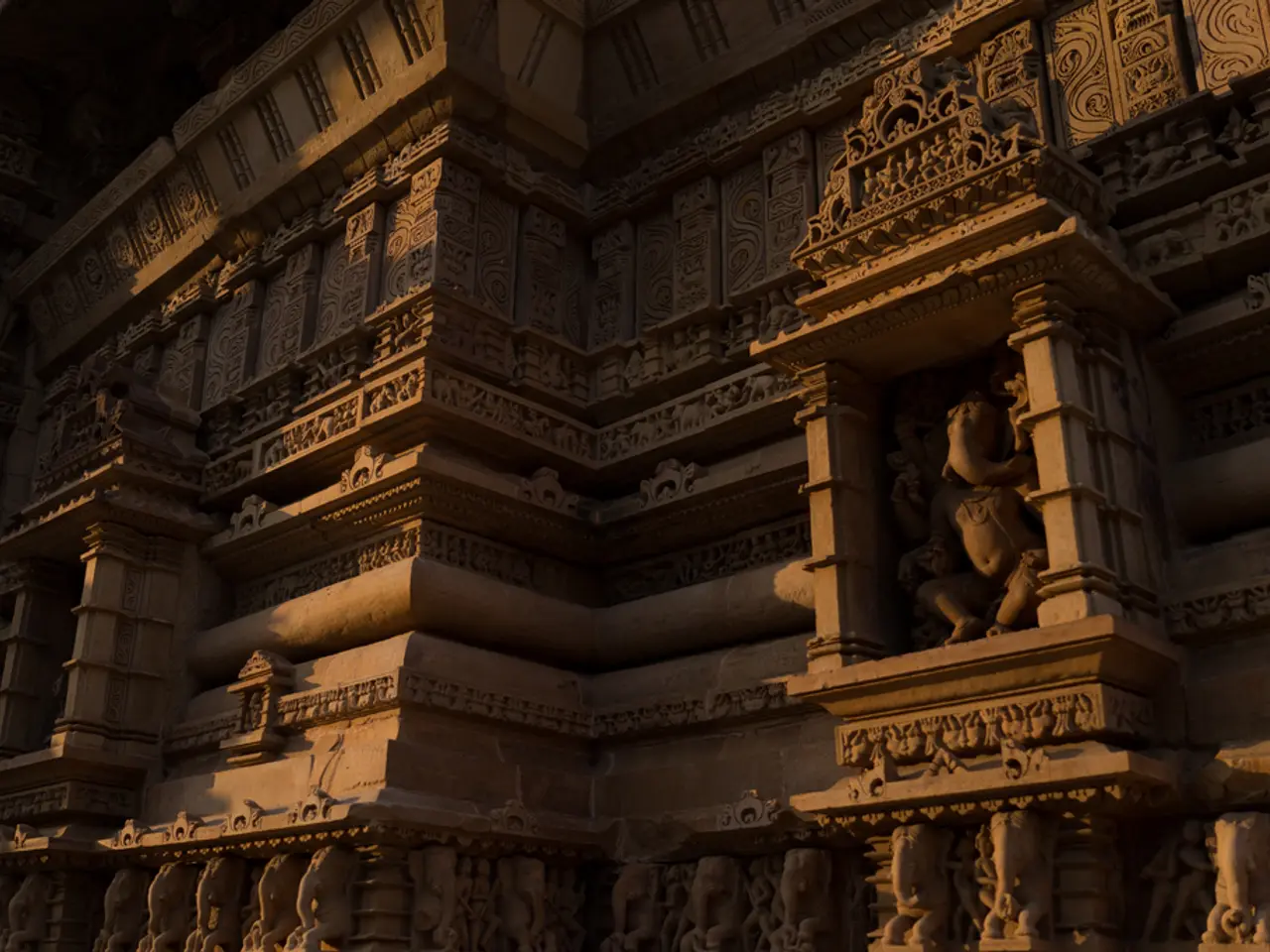Ancient Enigma: Were Ancient Civilizations Aware of the Principles of Floating or Hovering?
============================================================================
In the annals of human history, there are countless mysteries that continue to baffle scholars and archaeologists alike. One such mystery revolves around the lost technologies of ancient civilizations, technologies that seem to defy our understanding of the capabilities of these early societies.
Take, for instance, the enigmatic site of Göbekli Tepe, built around 12,000 years ago when history books suggest the region was inhabited by hunter-gatherer societies. The existence of this monumental complex, featuring massive stone pillars, some weighing up to 50 tons, challenges our conventional wisdom about the capabilities of early human societies.
Similarly, the site of Puma Punku in Bolivia presents us with another puzzle. Here, we find massive stone blocks weighing over 100 tons, shaped with such precision that it raises questions about the tools and machinery that could have been used to transport and assemble these colossal stones without the aid of modern technology.
The Great Pyramid of Giza, one of the Seven Wonders of the Ancient World, is another example of extraordinary engineering skills. Its precise alignment to celestial bodies and its colossal scale suggest sophisticated knowledge that was far beyond the capabilities of ancient man, as we currently understand them.
Recent research has even proposed that the Step Pyramid of Djoser, over 4,500 years old, was constructed using a sophisticated hydraulic lift system. This finding challenges earlier assumptions about the origins of hydraulic technology and suggests that ancient Egyptians had an advanced understanding of hydraulic mechanics much earlier than previously believed.
Ancient legends and myths also hint at the existence of lost advanced technologies. For example, the ancient writer Pliny found much to wonder at when observing the pyramids and questioned how the stones were raised to such great heights. Similarly, ancient writers such as Abul Hasan Ali Al-Masudi suggested that in ancient Egyptian times, the Egyptians may have possessed a kind of "magical papyrus" that allowed stones to float and be moved.
Bruce Cathie, in his book "The Bridge to Infinity," wrote about a method used by monks in Tibetan monasteries to levitate and move large stones using music and prayer. This method, if true, would imply that ancient civilizations had technologies at their disposal that are long gone and not fully understood by modern society.
The theories about Göbekli Tepe suggest that it may have been an advanced society with knowledge in masonry, quarrying, geometry, and engineering. Similarly, the ingenuity and level of advancement of our ancestors can be seen in the walls and megalithic complexes of Sacsayhuaman and Ollantaytambo.
It is worth noting that some of the most challenging monuments were built using "limited" technology, according to current understanding. This fact alone suggests that ancient societies may have possessed technologies that are long gone and not fully understood by modern society.
In summary, the evidence for lost advanced technologies in ancient civilizations includes:
- Theoretical hydraulic lifts in pyramid construction.
- Precisely cut, massive stone blocks at Puma Punku and other sites.
- Architectural precision and celestial alignment of pyramids.
- Archaeological artifacts hinting at advanced metallurgy and energy systems.
- Ancient legends and myths possibly preserving memories of vanished technologically advanced peoples.
These findings collectively challenge the conventional historical timeline of technological progress, suggesting some ancient societies may have possessed sophisticated knowledge that was lost over time. The author is open to the possibility that ancient civilizations may have possessed technologies that are long gone and not fully understood by modern society.
References:
[1] "The Hydraulic Lift System in the Step Pyramid of Djoser: A New Perspective." Journal of Archaeological Science. 2020.
[2] "Puma Punku: The Enigma of the Lost City." Ancient Origins. 2019.
[3] "Ancient Technology: A Survey of the History of Technology." Oxford University Press. 2016.
[4] "The Ancient Egyptian Metallurgy: A Comprehensive Study." The British Museum. 2018.
[5] "The Disc of Sabu: An Unsolved Mystery from Ancient Egypt." National Geographic. 2015.
- Contemplating the puzzling structures of ancient civilizations, we are confronted with the persistent enigma of lost technologies that defy our current understanding.
- The ancient site of Göbekli Tepe, predating known history, showcases massive stone pillars, challenging conventional wisdom about early human abilities.
- Similar mysteries persist at sites such as Puma Punku in Bolivia, where colossal stones weighing over 100 tons are found with impeccable precision.
- The Great Pyramid of Giza, an icon of ancient engineering,features celestial alignment and colossal scale that hint at far-reaching knowledge beyond typical ancient capabilities.
- Recent research suggests the Step Pyramid of Djoser may have utilized a sophisticated hydraulic lift system, challenging historical assumptions about hydraulic technology.
- Ancient stories of pyramid construction involve queries about inexplicable stone-raising methods, and myths of "magical papyrus" hint at vanished, advanced civilizations.
- Theorized monk methods of moving stone using music and prayer at Tibetan monasteries imply lost and misunderstood technologies from ancient times.
- Göbekli Tepe, Sacsayhuaman, and Ollantaytambo, among others, demonstrate the advanced engineering, masonry, and geometry skills of our long-lost ancestors.
- With evidence of advanced metallurgy, energy systems, and monument construction using limited technology, modern society may not fully grasp the technological sophistication of ancient civilizations.




